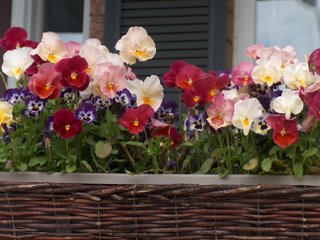Ladybird Ladybird, Fly away home.


"Ladybird, ladybird fly away home. Your house is on fire and your children all roam."
In many cultures the precious little ladybug (called ladybird by the English) has been believed to bring good luck. To the English farmer and the French vintner it signals good weather. They received their name centuries ago in Europe when farmers found aphids invading their grapevines. Prayers to the Virgin Mary for help were answered when thousands of little red beetles appeared and ate the aphids. The farmers named the helpful beetles in honor of Mary, also knows as "Our Lady."
If one lands on a person’s hand or dress it will bring good fortune, and If one lands on you when you are ill, it takes the illness away. The more spots on the back the better the luck; each spot represent a lucky month. If a young girl catches a ladybug and then releases it, the direction in which it flies away will be the direction from which her future husband will come. In Sweden, a ladybug on a young woman’s hand signifies that she is being measured for wedding gloves. And children just love them, and seem to communicate with them directly.















